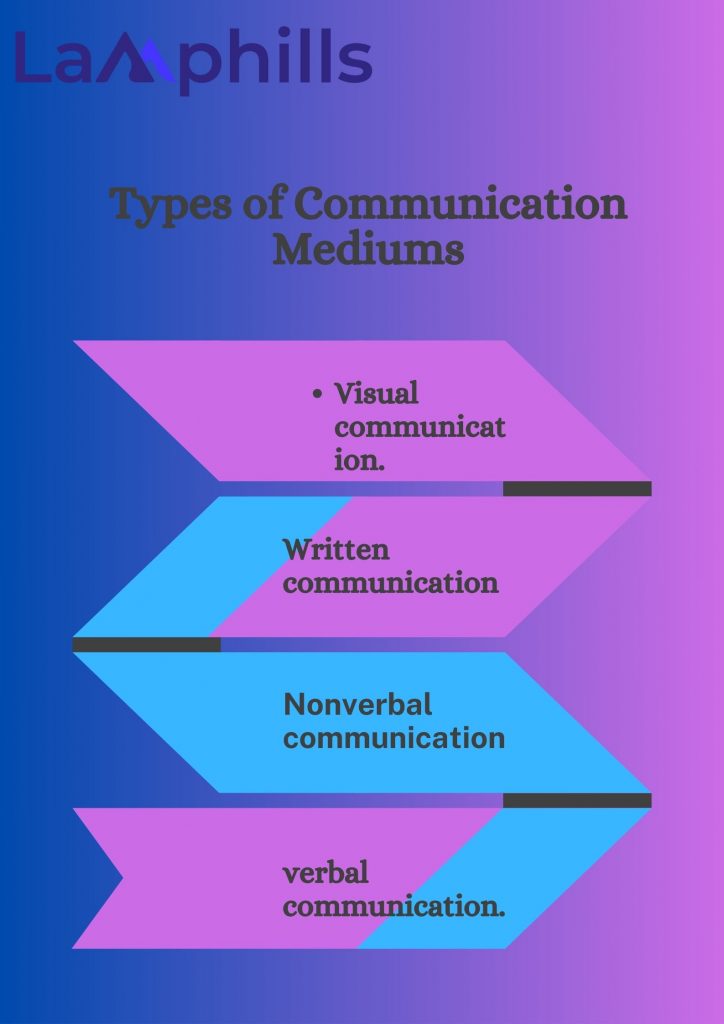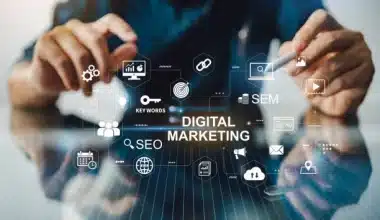Communication plays a vital role in our daily interactions with the people around us. With technology constantly advancing, we have access to numerous communication mediums, which can sometimes make it challenging to choose the appropriate one.
However, as someone who has also struggled with this issue in the past, I understand how overwhelming it can be. That’s why I’ve written this article to assist you in exploring the various communication mediums and how to use them effectively. My aim is to help you feel more confident in your communication skills, enabling you to connect with the people around you better.
So, let’s dive in and discover the best communication medium for you!
Key Point
- Communication mediums can be virtual or physical and include different communication types.
- There are four main types of communication mediums: verbal, nonverbal, visual, and written.
- Face-to-face communication is a form of verbal communication that involves spoken and nonverbal expressions.
- Remote communication involves using technology to communicate with someone in a different location.
- Written communication involves physically written notes, letters, and memos.
What are the Mediums of Communication?
A communication medium refers to a medium or a channel that serves as an outlet for a speaker or writer to convey a message to their audience. It can take various forms, such as written, verbal, or nonverbal elements. These mediums can be virtual or physical and may include multiple communication types.
A communication medium can either be virtual or physical. It may contain more than one element or communication type and address either an individual or a group of people. Some communication mediums may emphasize directness, while others may be more flexible and allow audiences to derive their own interpretations from the speaker’s message.
What Are the 4 Types of Communication Mediums?
I will also share with you the four types of communication. Although there are many types, these four will help you achieve your communication goals.

#1. Face-to-Face Communication
Imagine you’re in a bustling conference hall, surrounded by professionals eager to absorb insights from a keynote speaker. As the speaker takes the stage, a hush falls over the audience, and the room comes alive with anticipation. This scene embodies the essence of face-to-face communication, a dynamic exchange of spoken words and nonverbal cues that transcends mere conversation.
Face-to-face communication is also known as verbal communication. It involves using spoken words to convey a message from one person to another. It can also include nonconversational, in-person communication, like a speaker presenting at a conference with an audience of professionals. An in-person communication medium typically uses verbal and nonverbal expressions to communicate a message. Speakers state their message and may use gestures and other nonverbal cues to emphasize their meaning and intent. Listeners receive and process the message as the speaker delivers it, and they may respond immediately with their thoughts and questions.
The benefit of this style of communication is its immediacy. In a conversation, all parties can participate. This allows for an equal exchange of ideas without waiting for a response. In-person communication allows for more use of nonverbal cues than other types of communication. It can be easier, for example, to see and interpret nonverbal cues from a conversation partner when speaking face-to-face in a physical setting rather than through a virtual channel like a video conference.
#2. Virtual Remote Communication
Remote communication typically involves using technology to send a message to someone operating in another location. There are several types of remote communication methods, including those that involve written, verbal, and visual communication styles. For example, one common type of workplace remote communication is email. Emailing a client or another organization member is a simple and quick method of contacting someone remotely. Other remote communication options include conducting a video conference or phone call, sending a text or instant message, or using a pager or intercom.
Remote communication is a great way to contact those working in a different location from your own. This form of communication is often less formal than a face-to-face meeting. However, some may use video conferencing instead of face-to-face meetings for more formal conversations that require remote communication. For example, an employer may establish a videoconference with a job candidate to conduct a remote interview instead of an in-person one.
#3. Written Communication

Although less common due to technological advancements, written communication can still play an important role in the workplace. This form of communication involves physically written notes, letters, and memos. Written communication may either be formal or informal, depending on its context.
For example, leaving a handwritten note as a reminder to a coworker can be an informal communication style. An example of formal written correspondence may be a handwritten card to thank a coworker for their support. Like virtual remote communication, written communication involves less immediacy than face-to-face communication.
#4. Nonverbal Communication
In addition to spoken and written communication, nonverbal cues can help you express your message to your audience. Understanding how nonverbal cues like tone and gestures affect your communication can help you use these elements to express yourself to your listeners better. Often, people give nonverbal cues subconsciously when they speak to another person, but learning about these cues and how they express your ideas and feelings can help you use them to enhance your communication.
Since nonverbal cues rely on gestures and expressions, such as smiling, they can be difficult to express through some mediums. When talking on the phone or sending written correspondence, you may need to account for the lack of nonverbal cues to ensure your audience understands your message clearly. When speaking to someone in person or face-to-face, be conscious of your nonverbal cues and use them to improve the clarity of your communication or make the right impression on your audience.
#5. Social Media Communication
Social media communication in the workplace is more commonly used to promote messages to external consumers than to internal employees. Many companies use social media to connect with their target consumers through advertisements and promotions. Social media can be a great way for companies to attract customer’s attention, and it can combine various communication mediums. For example, some platforms support visual content like pictures, while others emphasize video communication.
Most platforms allow users to interact in private or public chat messages, allowing communication between two or more participants. Some companies or work teams may use social media for internal purposes. For example, your work team might use an instant messaging platform to send messages to coworkers quickly. Others may use professional social media platforms to conduct outreach with potential business partners. Although social media messaging is typically less formal than other types of messaging, it can be a convenient way to communicate with an audience.
What Is the Best Medium for Communication?
Verbal communication is the best medium for communication because it carries a large amount of information. It allows for legitimate feedback. Choosing the right medium is important for ensuring that your message arrives at your intended audience and that your audience accurately understands the purpose and meaning of your message. When you choose the right medium, the recipient is likelier to read, hear, or see your statement and understand your expression.
Ways We Communicate

The ways we communicate:
We communicate using all 5 senses:
- Eyes – Visuals
- Ears – Sound
- Nose – Smell
- Touch – Feel
- Taste – Texture and flavoring
Advertising often manipulates our senses to make products more appealing. Visuals are altered to make models appear more iconic, and buildings and products are designed based on mathematical principles to make them more pleasing to the eye. Sounds, such as music and subliminal messages, are used to sway our judgment. The smell is also manipulated to entice customers into stores. Advertisements often try to awaken responses in multiple senses to make products more attractive.
Checklist Covering Various Mediums of Communication
Benefits of Written Communication
Written communication has several benefits, including:
#1. Clarity
One of the primary benefits of written communication is its clarity and conciseness. By writing things down, individuals have the opportunity to review and refine their messages, ensuring clarity and accuracy. This process allows for effective communication, as the written word can be meticulously crafted to convey the intended message precisely.
#2. Documentation
Written communication is a cornerstone in both business and legal fields, providing a permanent record of exchanged information. This aspect is crucial as it ensures that details of agreements, decisions, and transactions are preserved. Having this documentation readily available for future reference is invaluable, particularly in scenarios where clarifications are needed or disputes arise. In such cases, written records can serve as incontrovertible evidence, supporting claims and facilitating the resolution of conflicts.
#3. Time-saving
Written communication is a powerful tool for disseminating complex or detailed information efficiently. Unlike verbal exchanges, written messages can be crafted and refined to convey ideas clearly and precisely. This format is especially beneficial when dealing with intricate subjects, as it allows the reader to review the content at their own pace, ensuring a deeper understanding. Furthermore, written communication facilitates the distribution of information to a broader audience quickly, making it an invaluable resource in today’s fast-paced world where time is of the essence.
#4. Accessibility
Written communication is a crucial aspect of both the business and legal domains as it provides a permanent and reliable record of information exchanges. This feature is essential because it ensures that details of agreements, decisions, and transactions are preserved for the future. These records are easily accessible for future reference, making them invaluable, especially in situations requiring clarifications or when disputes arise. In such cases, written records serve as indisputable evidence, supporting claims and facilitating the resolution of conflicts. Additionally, written communication enables the seamless sharing of information with individuals or teams worldwide, regardless of location or time zones, thereby enhancing communication efficiency.
#5. Accountability
Written communication is a powerful tool for efficiently disseminating complex or detailed information. Unlike verbal exchanges, written messages can be crafted and refined to convey ideas clearly and precisely. This format is especially beneficial when dealing with intricate subjects, as it allows the reader to review the content at their own pace, ensuring a deeper understanding. Furthermore, written communication facilitates the distribution of information to a broader audience quickly, making it an invaluable resource in today’s fast-paced world, where time is of the essence.
In summary, written communication is effective for clear and concise communication, documentation, time-saving, accessibility, and accountability.
References
Related Post
Corporate Communications: Strategies to Amplify Your Brand’s Message






